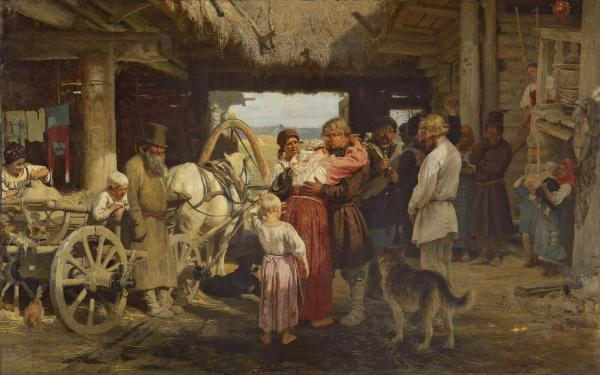The artist is Repin

In the late 1870s, upon returning to his homeland from a foreign business trip, Repin studied peasant life with special attention. This was a vivid reflection in his most capital picture on a modern topic, performed at that time, – "Seeing the recruit". She was written under the impression of the Russian-Turkish war of 1877-1878. The artist settled at one of the most touching moments – farewell to the family of a young recruit, choosing a typical peasant courtyard, which he found in the village of Bykovo near Moscow. All the feelings displayed in the work are manifested simply, cleanly, sincerely.
The artist carefully prepared for his plan, having performed many preparatory work. The work was created during 1877-1879 in Moscow and in the summer in Abramtsev-the estate of the famous philanthropist Savva Mamontov located near Moscow, which became the place of attraction of the largest artists and musicians. Vsevolod Mamontov, the son of the owner of the estate, recalled: “… of course, we knew perfectly well the courtyard of Matvey Dmitrievich Rakhmanovsky, a peasant of the neighboring village of Bykovo, depicted in this picture”.
The sentimental-sincere picture is devoid of external expression, which is why it seems to be the household and several static. Inside the closed space formed by outbuildings, a multi -figure group is successfully compiled, the semantic center of which was the scene of farewell to the mother with her son. The general mood of sorrow is supported by brownish colorful system with accents of red, pink, white color spots.
The work requires leisurely contemplation, which allows you to understand the internal state of each character. Touch images of peasant boys and girls, to whom Repin has always had a special attitude: “In general, village children are very smart, unusually observant, and most importantly, they are perfectly in the definition of all the phenomena of life …”.
Immediately after the end of the picture, she was acquired by the president of the Academy of Arts Grand Duke Vladimir Alexandrovich.
Leave a Reply